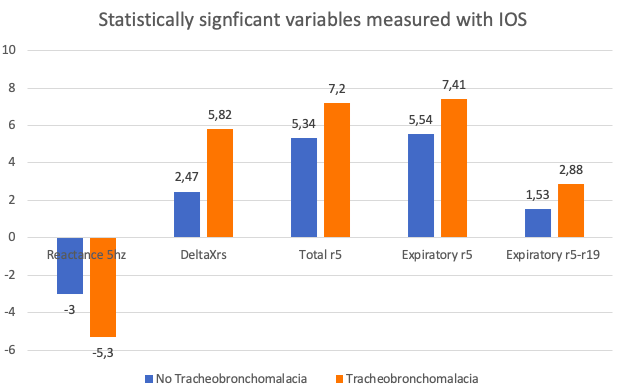Abstract
The measurement of resistance via impulse oscillometry (IOS) has proven to be of great value to determine small airway obstruction in asthmatic patients. Tracheobronchomalacia (TM) is a comorbidity of asthma, worsening the prognosis and hampering an optimal clinical assessment.
Our goal was to assess IOS utility in the determination of TM in clinically stable patients with severe asthma under biological treatment.
A descriptive prospective study was carried out with 33 (26 women) patients. Inclusion criteria included >18 years, controlled severe asthma under biological treatment and a bronchoscopy to evaluate TM. TM was considered significant when expiratory airway obstruction >80%. IOS was performed with Resmond PRO-FULL following the ERS protocol.
From the 33 patients included, 11 (33%) had showed chronic airway obstruction and 6 (18%) associated TM. Significant differences were present in IOS values. 
Reactance was lower in TM patients 5Hz (p=0,02) and DeltaXrs (p= 0,02). Greater resistances were present in TM patients in total R5 (p=0,024), expiratory R5 (p=0,02) and expiratory R5-R19 (p=0,03).
Patients with severe asthma associating TM>80% showed a significant decrease in reactance and a greater total resistance, increased in expiration. Thus, IOS proves useful as a non-invasive tool to evaluate the presence and functional repercussion of TM in patients with severe asthma.